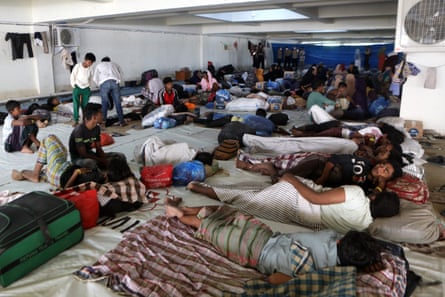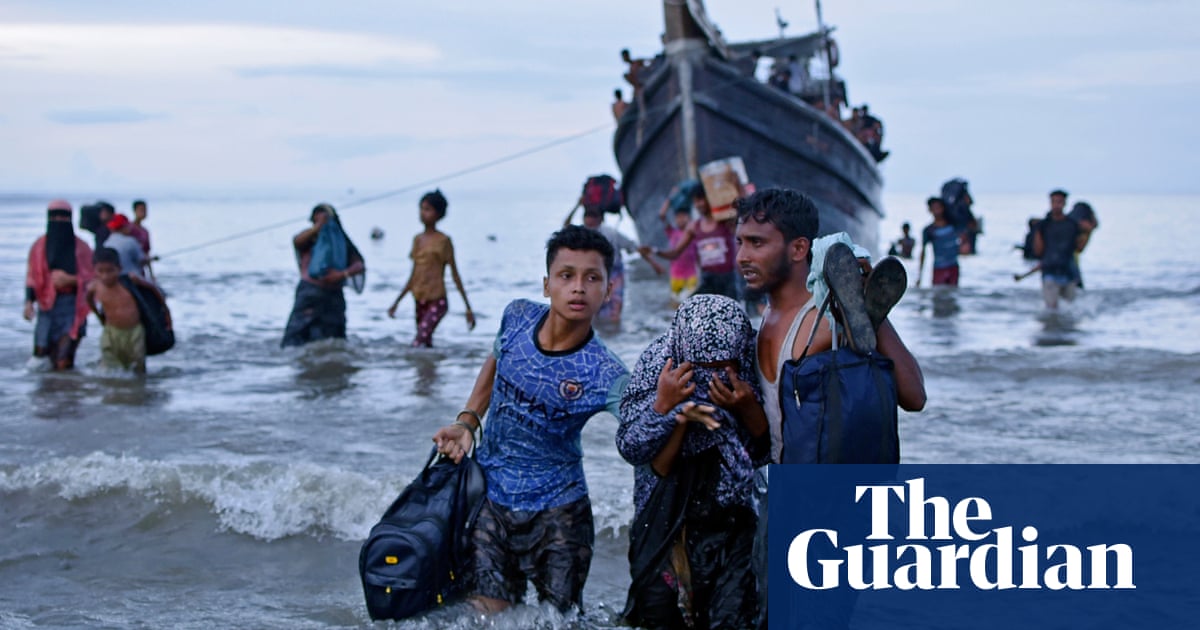In early December, hundreds of Rohingya refugees walked along the shore of Aceh province in Indonesia, with nothing to guide them but the faint glow of lights in a nearby village. After a treacherous journey by boat, they had already been turned away by locals in one area of Aceh and were seeking refuge elsewhere.
When the group, which included young children, reached their destination, the reaction was mixed. “We decided to let them stay there out of humanity, but not for long,” an official at the village said. He spoke anonymously because the issue has become highly sensitive locally.
Aceh was once one of the few places in the world that welcomed Rohingya refugees fleeing either persecution in their home country Myanmar, or the dire conditions in refugee camps in Bangladesh where about one million members of the ethnic group now live. In the past, fishers would guide stranded boats to safety, while villagers would wade into the waters to rescue the exhausted people onboard.
Over recent months, sentiments have changed. Locals have gathered to protest boat landings, warning that resources are too overstretched to host new arrivals. They have called for humanitarian groups to leave the area.
In late December, a mob stormed a building sheltering refugee families, including children, forcing 137 people on to trucks. They were taken to a government building, where protesters demanded they be removed. The UN refugee agency, UNHCR, said at the time the incident was caused by “a coordinated online campaign of misinformation, disinformation and hate speech against refugees”.
The wave of online messaging began just months ahead of February’s presidential election
Ann Mayman, UNHCR’s representative in Indonesia, says social media posts related to Rohingya were appearing “on multiple platforms, with similar messages and it was professionally [made] content. It was not made in a fisherman’s hut on a beach in Aceh. This was professionally-made and there were a lot of bots involved.” Posts often portray Rohingya as ungrateful, a drain on resources and a danger to local people.
Human Rights Watch said the government should investigate and hold accountable whoever has been mobilising the online campaign.
The local official in Aceh said there had been no criminal activity by Rohingya in his village. The only incident he could recall was an occasion when refugees took coconuts from villagers’ trees because they were hungry. The case was settled amicably and never happened again, he said.
Disinformation spreads online
On social media, misleading or false reports, and inflammatory language are not hard to find. On TikTok, one widely shared post compared Rohingya’s arrival in Aceh to Israel’s occupation of Palestinian territories.
“Rohingyas are determined to live in Indonesia for good”, the commentator said, adding that Rohingya had complained about, and thrown away, the food given to them. The commentator went on to call them “benalu” meaning “parasites,” in the post, which had been liked almost 200,000 times.
Another TikTok post said Rohingya did not look like real Muslims. Others accused Rohingya of smashing a window at a shelter, a claim that local media says is untrue, or of moving to a new location in Aceh, which according to UNHCR is also incorrect.
A separate post claimed a Myanman leader – it is not clear who specifically – had said Rohingya people are hard to control, live dirtily, defecate anywhere, are lazy, eat a lot and get married many times.

Indonesia’s president Joko Widodo said in December that Indonesia would give temporary humanitarian aid to the Rohingya while prioritising local residents, adding that he suspected human trafficking was behind the increase in arrivals.
Five posts were taken down by TikTok for breaching its community guidelines.
In a statement this week, Human Rights Watch accused anonymous accounts on Instagram, X and TikTok, of spreading disinformation and misinformation about Rohingya refugees. Anonymous accounts also published personal information about local UNHCR staff online, leading to online threats putting their safety at risk, HRW said. All three platforms have policies that forbid doxing, in which a person’s private information is shared online.
TikTok’s community guidelines state the platform does not allow “inaccurate, misleading, or false content that may cause significant harm to individuals or society, regardless of intent”.
Meta states in its policies that it does not allow hate speech on Facebook or Instagram, while X’s community policies also state it is “committed to combating abuse motivated by hatred, prejudice or intolerance”
‘We hope the government will move them’
Azharul Husna, coordinator of the Aceh chapter of the NGO the Commission for Missing Persons and Victims of Violence (KontraS), says the current level of hostility towards Rohingya is unprecedented and has not been seen since Rohingya refugees first arrived in the province in 2009.
A few small-scale protests against their arrival had occurred in 2021 and 2022, due to disagreements over where refugees should stay, but continued talks and engagement with locals had eased this, Azharul adds. Now, though, misinformation and the smearing of refugees on social media has divided locals and escalated into bigger protests.

According to UNHCR, there are approximately 1,750 refugees living in nine different sites in Aceh. The vast majority – all but 147 – arrived in recent months. Rohingya who arrive in Aceh have typically then moved onwards to Malaysia.
Since 14 November, 11 boats have landed in Aceh and one in one in North Sumatra. This is an increase on previous years, but the numbers are still manageable, says Mayman.
Yogi Febriandi, head of the Department of Islamic Political Thought at IAIN Langsa, Aceh, says that while there are local concerns about security and resources, people do not want to see aggressive protests against Rohingya. “They want Jakarta to come to Aceh to give clear information, [a] clear budget, to handle the issue,” he says.
While in the past, many NGOs and humanitarian organisations dedicated funding to supporting Rohingya refugees in Aceh, today resources are far more limited, he adds.
Indonesia is not a party to the 1951 Refugees Convention, though it has a national law on refugees which offers temporary protection.
For now, many of the refugees who arrived in Aceh in December, remain, sleeping in cramped conditions in tents near the shore. For the first few days, villagers gave them food and second-hand clothes. Now they are receiving aid from UNHCR and other humanitarian groups.
The local official who spoke to the Guardian wants the Jakarta government to provide an alternative place for the refugees, not least because he fears they are now exposed to heavy rains and winds.
“We hope the government will move them somewhere else soon,” he said. “We feel sorry that they have to sleep in such a bad condition.”
